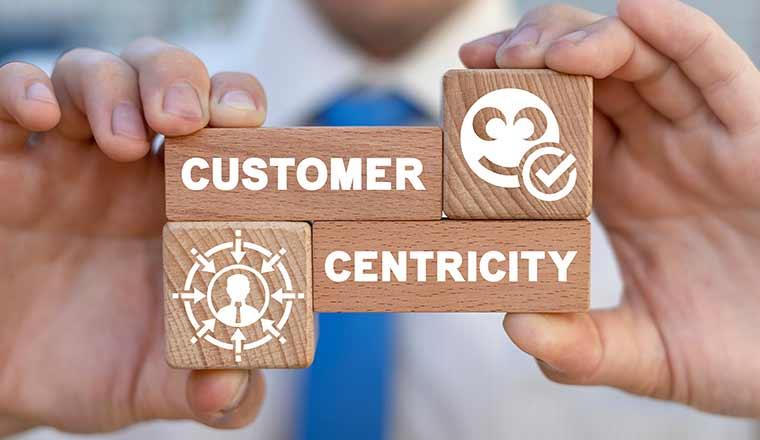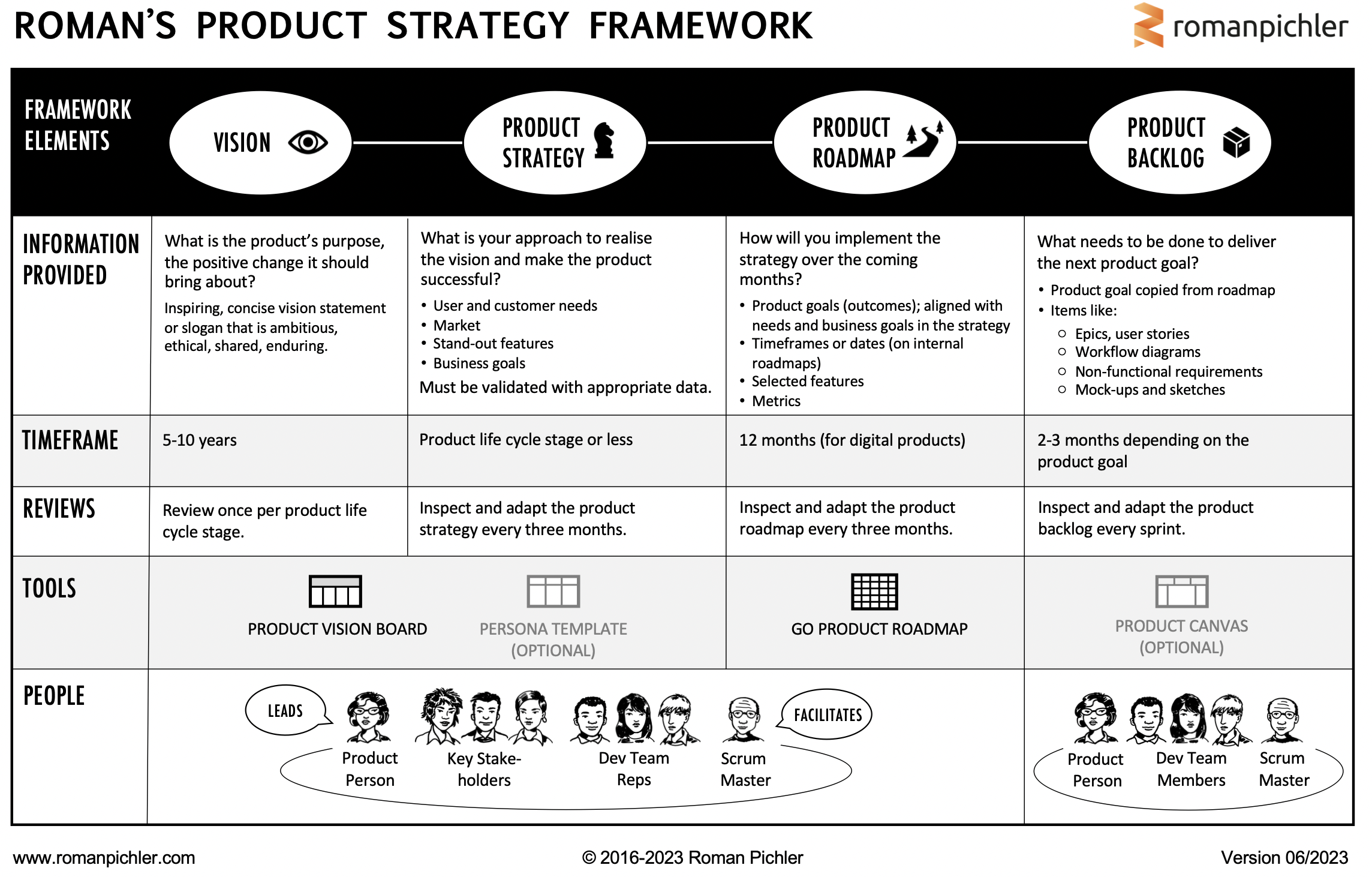
Improving Enabling Customer Centricity
For an organization to thrive in today's competitive landscape, a leader must champion a customer-centric mindset that permeates every level of the enterprise. By placing the customer at the core of all decision-making processes, companies can ensure that their products, services, and strategies genuinely meet the evolving needs of their target audience. When leaders prioritize this approach, it sets a clear organizational direction, fostering unity and purpose among employees. Adopting this mindset company-wide leads to enhanced customer satisfaction and loyalty and promotes innovation and adaptability within the team. When aligned with this vision, employees become proactive advocates for the customer, leading to more informed decisions, increased trust, and long-term business sustainability.
Developing
An agile leader “developing” an understanding of the value of Enabling Customer Centricity and adopting the foundational techniques should focus on the following improvements.
- The What: Leverages market research and customer feedback to create insights into customer problems
- The How: A leader can enable a customer-centric mindset within an organization through various techniques:
- Establish Clear Vision and Values: The leader should set a clear vision that focuses on the importance of the customer. This could be a mission statement or a set of organizational values where the customer is placed at the forefront. One great tool to get started is utilizing a Product Vision Board.
- Leverage Market Research: Regularly invest in qualitative and quantitative market research. Understand customers' demographics, behaviors, preferences, and pain points. This can be achieved through surveys, focus groups, or one-on-one interviews. Ethnographic research is a direct observation technique of users in their natural environment rather than in a lab. This type of research aims to gain insights into how users interact with things in their natural environment.
- Prioritize Customer Feedback: Create structured channels for customers to provide feedback. This could be through after-sales surveys, online review platforms, or customer service touchpoints. Analyze this feedback to identify common themes and areas for improvement.
- Employee Training: Offer training sessions for employees at all levels to understand the value of a customer-centric approach. Role-playing, workshops, and real-life case studies can be effective tools.
- Reward and Recognition: Implement a reward system for employees demonstrating customer-centric solid behaviors. This could be through monthly awards, bonuses, or public acknowledgment. An innovative approach to this is Management 3.0 Merit System
- Cross-functional Collaboration: Promote collaboration between departments like sales, marketing, product development, and customer service to ensure a unified approach to solving customer problems.
- Iterative Product/Service Design: Adopt an iterative approach to product or service design where prototypes or versions are tested with real customers, and feedback is integrated before finalizing.
- Open Communication Channels: Leaders should maintain open communication channels where employees can share their insights or challenges related to customer interactions, ensuring a continuous feedback loop internally.
- Lead by Example: As with all organizational changes, the adoption rate increases significantly when leaders lead by example. Engaging directly with customers, seeking feedback, and demonstrating a genuine interest in improving customer experience can inspire employees to adopt a similar mindset.
- The What: Leverages user experience (UX) research and feedback to help inform product design.
- The How: A leader enables leveraging user experience (UX) research and feedback by prioritizing and investing in dedicated UX teams or professionals. They then ensure that product development processes are integrated with regular UX research activities, like usability testing or user interviews, and that feedback gathered is systematically considered in product design decisions. This proactive approach ensures that products consistently meet users' needs and preferences.
* * * * * *
" The most important single thing is to focus obsessively on the customer. Our goal is to be Earth’s most customer-centric company. – Jeff Bezos"
* * * * * *
Emerging
An agile leader “emerging” beyond the understanding of the value of Enabling Customer Centricity and adopting the foundational techniques should focus on the following improvements:
- The What: Promotes the use of Design Thinking tools (i.e., customer journey maps, personas) to empathize with the customer
- The How: The Agile Leader can champion training sessions or workshops on tools like customer journey maps and personas to promote Design Thinking tools. Ideo has certified training for Design Thinking, which the industry recognizes as a gold standard; it can be found here.
- The What: Promotes positive customer experience and partners with CX SMEs to leverage their tools and upskill team members.
- The How: Given the multifaceted nature of customer experience encompassing cognitive, affective, sensory, and behavioral responses at various stages of the consumption process, an Agile Leader has a pivotal role in ensuring that their teams are primed to offer positive customer experiences. To do this:
- Esthetic Realm: This pertains to the passive appreciation of environments or experiences. In this realm, customers are immersed in an environment but don't actively influence it. For instance, sitting in a beautifully designed café and enjoying the ambiance falls under the esthetic experience.
- Escapist Realm: Here, the customer actively engages in the experience, often seeking an escape from their routines or environments. Examples include adventure travel, gaming, or attending a themed event where the customer plays a role or is actively participating in creating the experience.
- Entertainment Realm: This is where customers passively receive the experience. Examples are watching a movie, a concert, or a theatrical performance. The focus here is on the enjoyment and pleasure derived from the content provided.
- Educational Realm: This involves active customer participation in an experience from which they gain knowledge or learn new skills. Workshops, seminars, classes, and museums can fall into this category. Here, the customer is actively involved and seeking new knowledge or skills.
- Holistic Understanding: An Agile Leader should comprehensively understand the customer journey, from pre-purchase anticipations to post-purchase reflections. This includes being attuned to the esthetic, escapist, entertainment, and educational realms of experience that customers go through.
- Collaboration with Customer Experience (CX) Experts: Partnering with Customer Experience Subject Matter Experts (SMEs) is essential. These experts bring in-depth insights, best practices, and innovative tools tailored for enhancing customer experience. Collaborative sessions between agile teams and CX SMEs can pave the way for practical applications of these tools in product or service development.
- Upskilling Team Members: Knowledge sharing is integral to the agile methodology. An Agile Leader can facilitate training sessions, workshops, or regular sync-ups with CX SMEs to ensure the team is continuously upskilled. This is especially crucial given the various dimensions of customer experience, from sensory perceptions and emotions to memories and behavioral intentions.
- Feedback Loops: Implementing feedback loops wherein customer feedback is regularly obtained, analyzed, and acted upon ensures that the team remains customer-centric. By understanding the anticipatory pleasure or displeasure customers experience and their remembered experiences, agile teams can make informed enhancements to their offerings.
- Embedding CX in Agile Ceremonies: Whether it's sprint planning, retrospectives, or daily stand-ups, an Agile Leader can weave in the customer experience narrative. For instance, when discussing a new feature in sprint planning, the conversation can be centered on how it would affect the customer's sensory experience or emotional response.
- Advocating Design Thinking: Given that design thinking focuses on empathizing with users and creating solutions based on their needs, promoting its tools like customer journey maps and personas will ensure that the agile team always has the customer's perspective front and center. In essence, by championing a customer-centric mindset, partnering with CX specialists, and ensuring that the team is equipped with the right skills and tools, an Agile Leader can effectively drive positive customer experiences.
- The What: Helps create roadmaps and product strategies based on solving customer problems and future market events
- The How: An excellent framework for creating a product strategy, including Roadmaps, is Roman Pichler’s Product Strategy Framework.

Adapting
An agile leader “adapting” beyond the understanding of the value of Enabling Customer Centricity and adopting the foundational techniques should focus on the following improvements:
- The What: Promotes the use of data analytics to understand customer behavior better and validate the insights gleaned from Design Thinking tools.
- The How: An agile leader fostering data analytics to understand customer behavior better and complement insights from Design Thinking can adopt the following practices:
- Champion Data-Driven Culture: Begin by fostering a culture that values and bases decisions on data. This means challenging teams to back up their assumptions or statements with evidence from the data.
- Tools and Infrastructure: Advocate for the acquisition and use of robust data analytics platforms such as Tableau, Google Analytics, Looker, Power BI, or other specialized tools relevant to the industry. These platforms facilitate data visualization, allowing teams to see patterns, trends, and insights.
- Skills Development: Organize training sessions or workshops on data analytics tools and best practices. Encourage team members to acquire certifications or participate in online courses (e.g., from Coursera, Udemy, or DataCamp) to enhance their proficiency.
- Integrate Analytics and Design Thinking: Pair data analysts with design thinkers. While the design thinkers bring the empathetic, human-centered lens, the data analysts can provide quantitative validation. Together, they can create solutions that are both innovative and grounded in reality.
- Iterative Feedback Loop: After implementing any solution, continuously collect data on its performance. Use this data to iterate and improve, embodying the agile mindset.
- Hire or Collaborate with Data Scientists: If deeper analysis is needed, significantly predictive analytics, consider collaborating with data scientists. They can leverage advanced statistical methods and machine learning algorithms to glean deeper insights from the data.
- Customer Segmentation: Use analytics to segment the customer base. Understanding different customer personas and their behaviors can help in tailoring experiences and products to specific segments, increasing satisfaction and loyalty.
- A/B Testing: Implement A/B tests to trial new features, products, or marketing strategies. By comparing different versions, you can validate which resonates more with the customers and drive decisions based on these results.
- Feedback Mechanisms: Embed mechanisms within products or services to gather direct feedback. This can be through surveys, feedback widgets, or direct interviews. Analyze this feedback data to understand what customers truly want or need.
- Ethical Use of Data: Emphasize the importance of ethical considerations when dealing with data. Ensure customer data is anonymized and secure. Ensure teams are trained in GDPR or other relevant data protection regulations.
- The How: An agile leader fostering data analytics to understand customer behavior better and complement insights from Design Thinking can adopt the following practices:
- The What: Facilitates regular visits to customers so teams can observe how their work is done
- The How: An agile leader can facilitate regular customer visits by setting up a structured program where team members periodically accompany account managers or customer service representatives during client interactions. The leader should prioritize these visits, integrate them into the team's routine, and ensure that actionable insights derived from direct customer observations are documented and incorporated into the product or service development process. By fostering such direct exposure, the leader helps teams gain firsthand knowledge of customer pain points and needs, grounding their work in a real-world context.

Source – Customer Visits
Optimizing
An agile leader “optimizing” beyond the understanding of the value of Enabling Customer Centricity and adopting the foundational techniques should focus on the following improvements:
- The What: There are objective success criteria and measurements defined to assess the team
- The How: An agile leader can foster Customer Centricity through communities of practice and mentoring in the following ways:
- Communities of Practice (CoP):
- Initiate and Sponsor: The agile leader can create a CoP focused on customer centricity. By providing resources and space, they can ensure that this community thrives.
- Curate Content: Introduce case studies, research papers, and real-world examples highlighting customer-centric approaches' significance.
- Invite Guest Speakers: Arrange for external experts or internal stakeholders who've successfully implemented customer-centric strategies to share their insights.
- Encourage Knowledge Sharing: Regularly schedule sessions where members can share their challenges and solutions related to customer centricity, fostering a culture of continuous learning.
- Mentoring:
- Pairing: Agile leaders can pair less experienced team members with seasoned professionals who exemplify customer-centric behavior. This mentor-mentee relationship can be formal or informal.
- Structured Curriculum: Design a mentoring curriculum focusing on customer-centric methods, tools, and mindset. This can include readings, exercises, and real-world problem-solving.
- Regular Check-ins: Set up regular check-ins between mentors and mentees to discuss progress, challenges, and insights related to customer centricity.
- Communities of Practice (CoP):
- The How: An agile leader can foster Customer Centricity through communities of practice and mentoring in the following ways:
Conclusion
Agile leadership is paramount to customer centricity because it fosters an agile, adaptable environment focused on iterative learning and rapid response to customer feedback. Such leaders emphasize collaboration, transparency, and empowerment, ensuring that teams remain aligned with customer needs and can swiftly pivot as those needs evolve. By championing a culture of continuous improvement and valuing direct customer insights, agile leadership ensures that the organization remains customer-focused, delivering solutions that truly resonate with end-users.